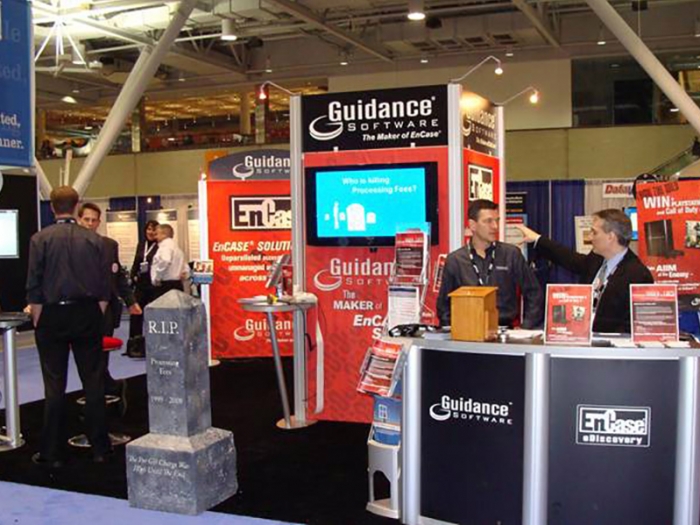ExhibitorEase Guide: Exhibitor Sales Techniques
 |
Your sales team, combined with the features of your exhibit, must attract interested buyers to stop by your booth. This sales method differs from the traditional approach where appointments are set ahead of time. Sales opportunities at shows can peak rapidly. Staffers need to qualify visitors and provide product/service information quickly and concisely, yet without obvious pressure. Section 6: EXHIBITOR SALES TECHNIQUESTIPS
When you choose your sales and technical team, select people who are professional, friendly, articulate, and able listeners. In your pre-event training session, emphasize the importance of body language. Folded arms convey a stiff, unfriendly demeanor. Smiles, eye contact with people in the aisles, and casual stances invite visitors to your booth. Remember that selling time is limited at a show and your sales team must make every minute count in order to achieve their sales goals. After engaging a prospect, instead of asking questions that require a yes or no answer, use open-ended questions such as “How can you use a product like ours?” or “What brought you to the show?” The answers will help your staff determine whether the visitor is a qualified prospect. Examples of Qualifying Questions
CUSTOMER SERVICE RULES
Your sales team should listen carefully to the answers of people who visit your booth and respond to each question specifically. Lengthy product descriptions are too time-consuming in a show setting. Your reps need to talk to as many qualified visitors as possible, and should not spend all their time with only one prospect. Your company can offer the prospect detailed product literature, turn the customer over to your technical staff for further information, or set up an appointment for after the show. To quickly qualify the people browsing at your booth, a reliable tool is a general buyers’ profile created prior to the show. Your sales and technical reps can use the profile as a qualifying guide to eliminate show attendees who have limited buying authority, or those who are just checking out the competition. So, although a sales rep must always act kindly toward everyone visiting your booth, qualifying the visitor will help your rep calculate how much time to spend engaging the visitor in conversation. Your sales team must also be skilled in sustaining the attention of the people waiting to speak with a rep. A smile in their direction, a nod of the head, or direct eye contact will assure the lingering visitor that they are recognized and will be attended to shortly. Use your promotional giveaways, surveys, and company literature as a means to ending conversations on a high note so that your staff can move onto the next prospect. Your rep can hand the visitor the information as an expression of appreciation and thanks for visiting the booth. Finally, a word about using show-temps. Some exhibitors hire professional show-temps to greet booth visitors and hand out introductory literature. Using temps can save you travel and hotel expenses. Sales and technical teams are then free to use their valuable time wisely in selling and demonstrating products. Before the show, you will need to provide the temps with some basic product/service training. SectionsSection 1: Planning for the Show |
